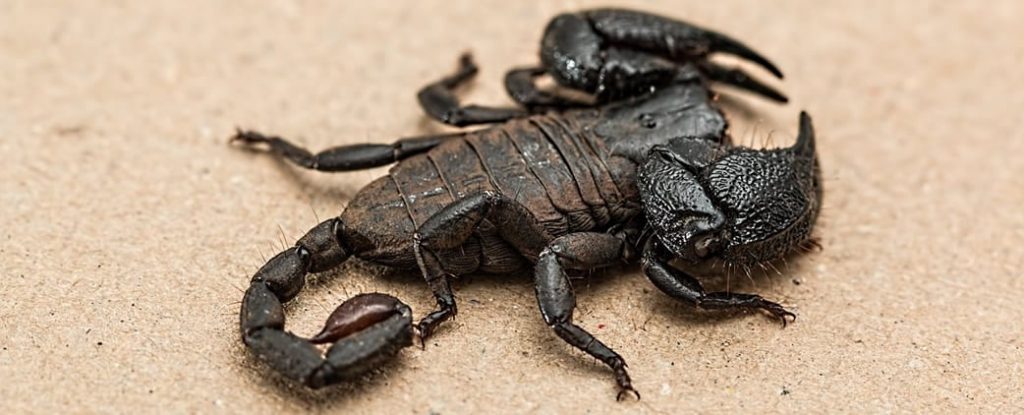[dropcap style=”font-size:100px;color:#992211;”]S[/dropcap]corpions can be found at every corner of the globe and on six of the seven continents. That makes any rigorous accounting of the world’s venomous scorpions and their various effects on human beings a tall task. But in a new study published in the journal Toxicon, a team of Florida State University researchers proved they were up to the challenge.
The team documented 104 species spanning dozens of countries, providing a vital update to the global record of medically significant scorpions, or scorpions whose venom could be alternately gravely harmful or medically beneficial to human beings. Their work helps modernise the study of scorpion epidemiology and reveals important gaps in the processes by which scorpions are collected, identified and characterised.
Scorpions, like scores of other species, evolved venom as a tool for defence and predation. Often, their venom will develop in response to specific adaptations in their predators or prey, triggering a co-evolutionary process that produces more lethal venom in the scorpions and more robust resistances in their adversaries.
For this study, FSU doctoral candidate Micaiah Ward led an exhaustive review of existing research in an effort to compile a comprehensive catalogue of medically significant scorpions, their native locations and the severity of their symptoms. The review shows that the most dangerous species appear in clustered hotspots.
A cocktail of tiny neurotoxic peptides gives some scorpion venom a decidedly unfriendly edge, but other scorpions produce venom that humans have learned to use to their advantage. One Iranian species produces a toxin that scientists suggest could be used to treat brain tumours, despite a name that sounds more malevolent than medicinal. “Its common name is the deathstalker scorpion,” Ward said. “It produces a toxin that targets certain brain tumours to stop their growth. It’s also called ‘tumour paint’ because they can use it to highlight a tumour before surgery so that they cut out all the parts of the tumour without leaving anything behind.”
In addition to cataloguing and mapping medically significant scorpions, the researchers’ review also functioned as an investigation into the mechanisms of scorpion research itself. A number of disconnects were revealed between the many disciplines studying these species. Clinicians treating scorpion stings, Ward said, rarely communicate with scientists studying the properties of their venom or the nature of their habitats. The result is frequent discrepancies in the data.
“The first thing to do if you get stung by a scorpion is to stay calm,” said Ward. “If you can, try to take a picture of the scorpion or put it in a cup and bring it to the emergency room with you. They can send it to a museum or somewhere where they can properly identify that species and associate it with the specific symptoms that you have. That’s what we need.”
The study was supported by the National Science Foundation.
Source: ScienceDaily

Naila Scargill is the publisher and editor of horror journal Exquisite Terror. Holding a broad editorial background, she has worked with an eclectic variety of content, ranging from film and the counterculture, to political news and finance.




















